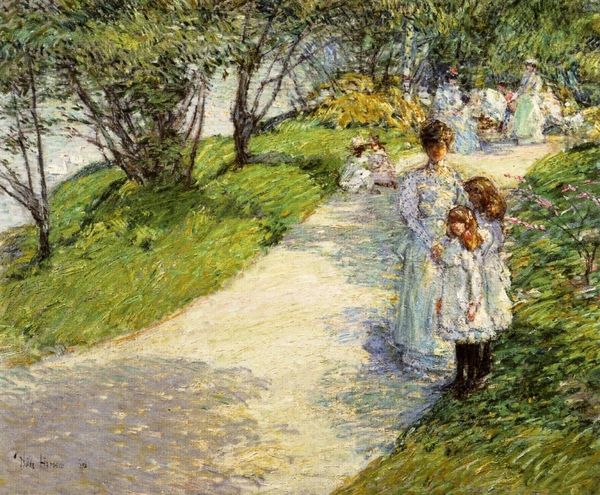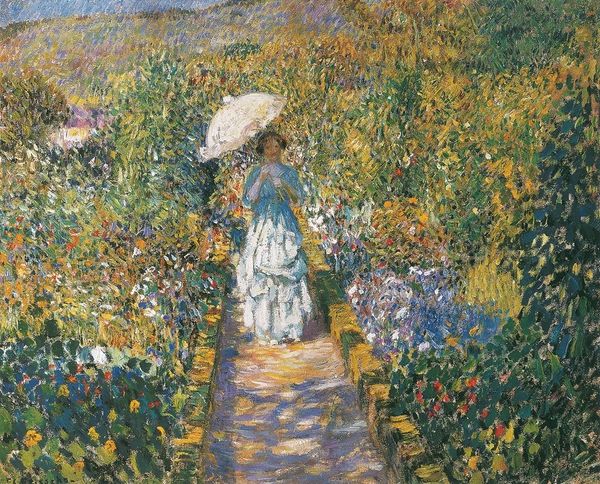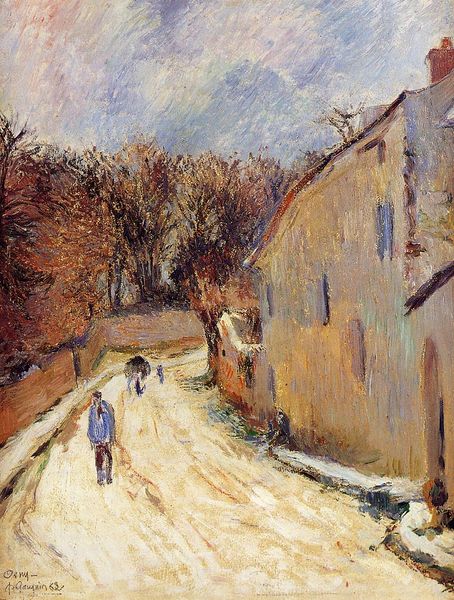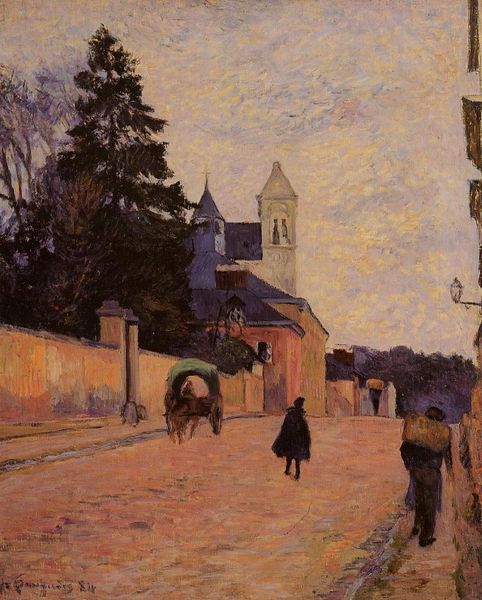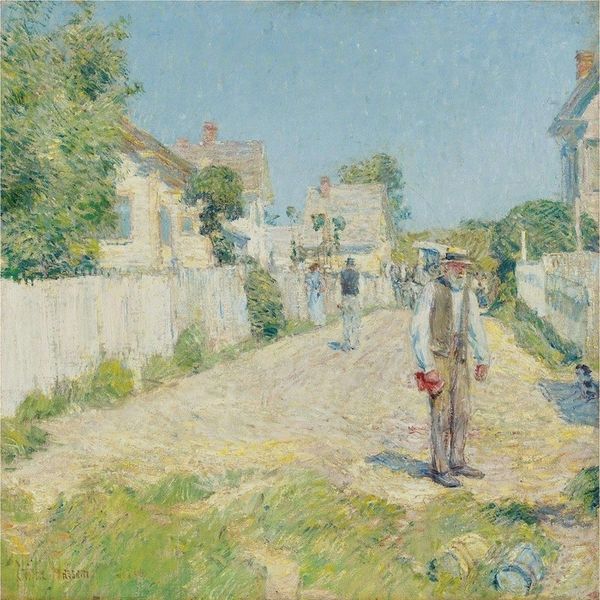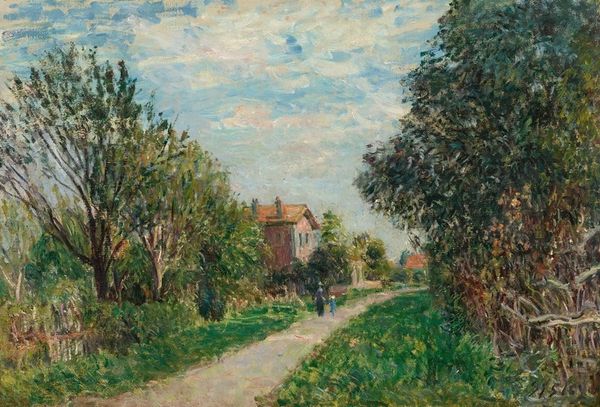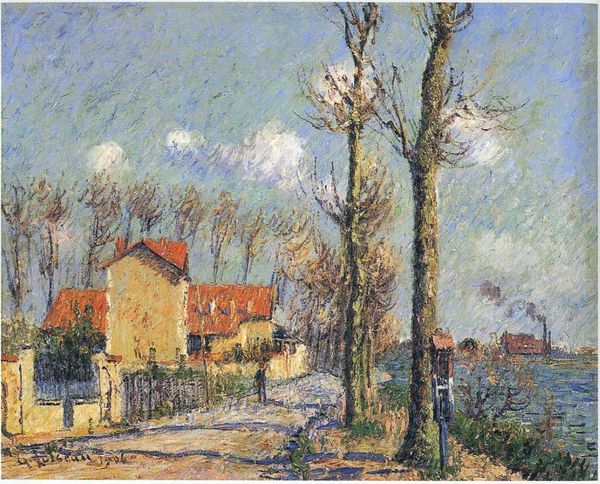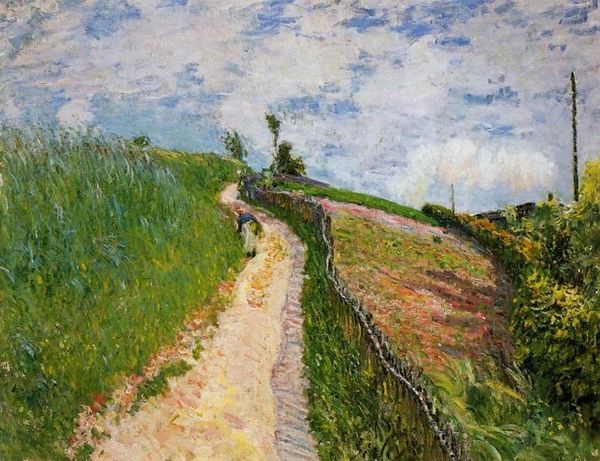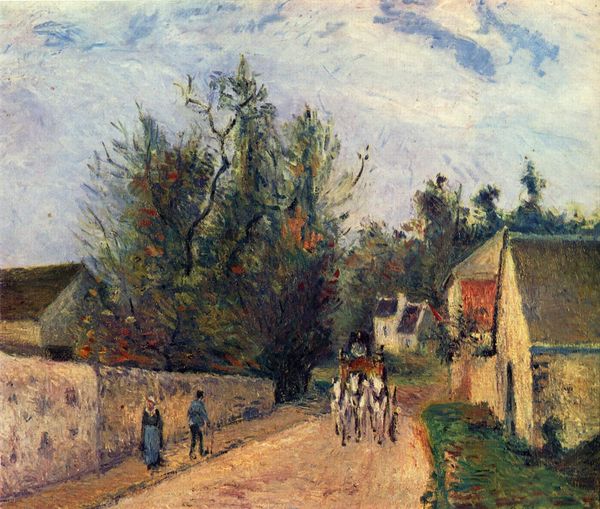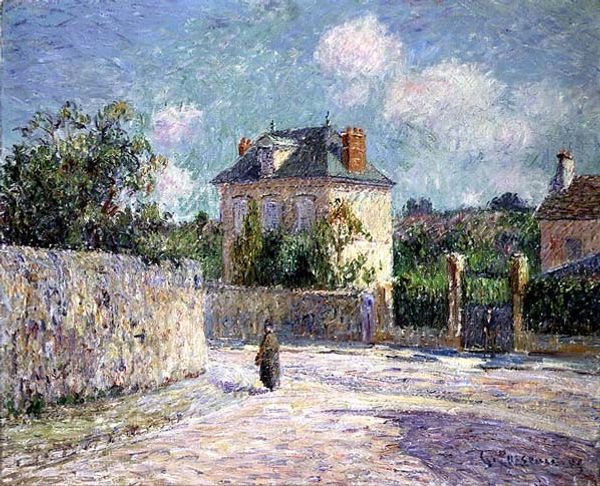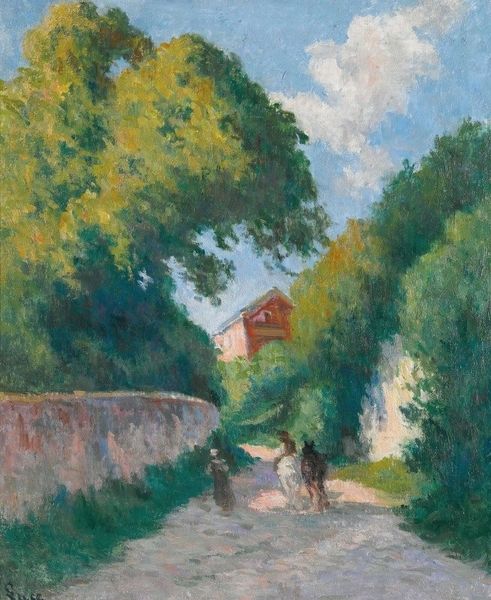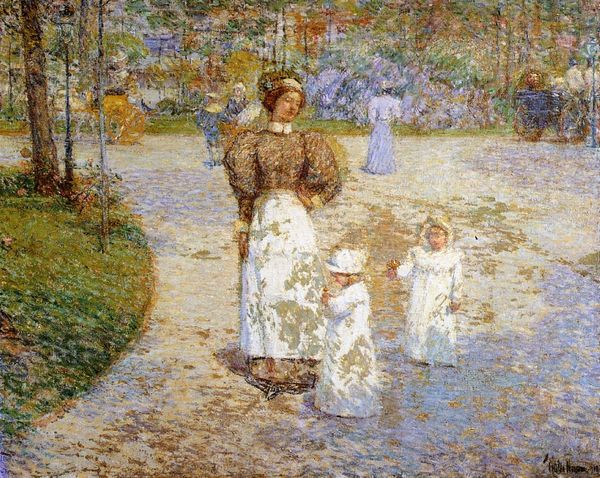
Copyright: Public Domain: Artvee
Editor: This is Childe Hassam's "Piazza di Spagna, Rome" from 1897, rendered in oil paint. I'm struck by the way he captures the light; it almost dissolves the architecture into shimmering textures. What elements of visual structure do you see as most important? Curator: Note how Hassam's application of short brushstrokes coalesces into a unified field of visual information. The composition leads the eye up the steps, emphasizing the repetitive, almost rhythmic, nature of the architecture itself. He presents not merely a depiction, but a surface alive with optical phenomena. Editor: It feels very transient, like a fleeting moment. The architecture, even the figures, appear somewhat dematerialized. Curator: Precisely. Consider the relationship between the tangible subjects and intangible light and atmosphere. It transcends mere representation; it borders on abstraction, prioritizing the sensations of light and color over precise mimetic fidelity. Would you agree the semiotic interpretation transcends its ostensible subject matter? Editor: That's a good point! The subject is only part of the artwork's intention. I guess I was also curious how this fits within the larger Impressionist movement... Curator: One might say Hassam synthesizes fleeting perceptions into a cohesive pictorial structure, akin to musical composition with harmonious consonance. It showcases how color relationships structure visual experiences, even within a representational setting. Editor: This emphasis on formal elements gives me a new perspective to appreciate the construction of experience. Thanks! Curator: The interplay between materiality and light fundamentally transforms our apprehension. It truly expands our aesthetic understanding, doesn't it?
Comments
No comments
Be the first to comment and join the conversation on the ultimate creative platform.

